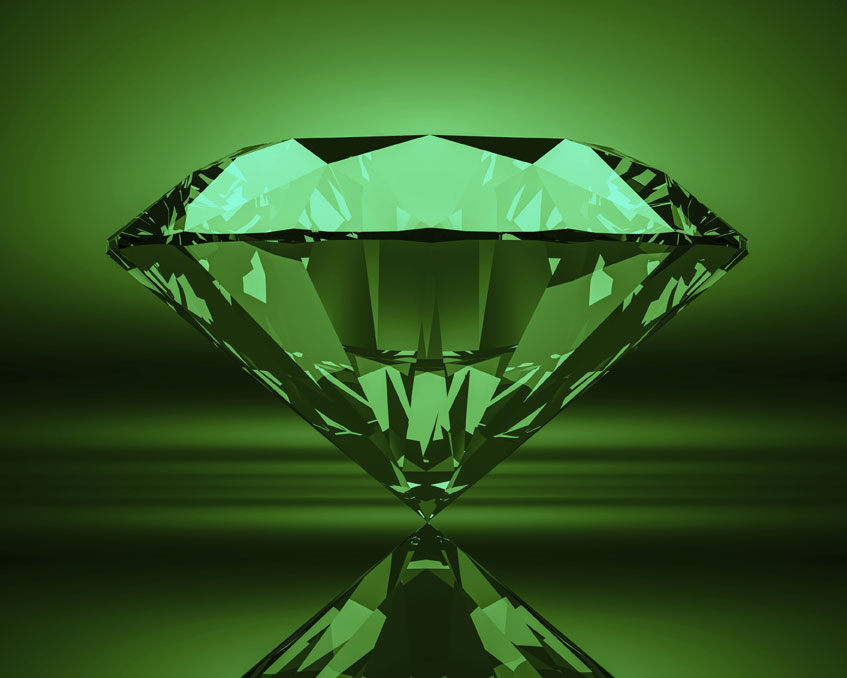
Emerald is an ancient gemstone. Its name had undergone a lot
of changes but the name’s origin is smargados which means “green gem”.
Emerald is mainly
derived from the mineral beryl. The green color of emerald is due to the
presence of chromium in its composition. Due to this green color, emerald is
counted as one of the rarest gemstones. It belongs to the group of top 4 most
expensive gemstones which include diamond, ruby and sapphire.
Emeralds are mined
in many regions including Europe, Africa, Asia, North and South America. Among
many other countries, Columbia is the largest producer of emeralds. Depending
on the year, Columbia produces 50-95% of total emeralds in the world.
Another country
which produces emeralds after Columbia is Zambia.
What makes an emerald?
The grading of
diamonds mainly includes the use of 10x magnification loupe so that the color,
clarity, cut and carat can be established. On the other hand, the grading of
emeralds doesn’t require the use of magnified view. Having that said, an
emerald is considered flawless if there are no visible inclusions to be seen
with the naked eye.

The reason emeralds
are not graded using extravagant measures is that the occurrence of fissures
and pits is pretty common in the structure of emeralds. It is mainly due to the
natural of beryl from which the emeralds are formed. Most of the emeralds
contain lots of inclusions; and due to this occurrence of inclusions, the
emeralds are treated at lab in order to enhance clarity and color. There may be
many naturally occurring emeralds which may not require any treatment at all.
Such naturally clear emeralds are the costliest ones. The experts are usually
quite capable to find out which emerald has been treated and which is not.
Emerald’s use in jewelry
Emeralds are used
in jewelry but the way these are cut and shaped can be quite different as
compared to other precious stones. When emeralds are cut to fit in the rings,
they are cut in the shape of oval and rectangle. The facet is cut into the top
edge only.
Another reason for
the emerald to be cut and shaped with such limited options is that this
gemstone has the hardness of 7.5-8 on the Mohs scale. On the other hand, the
diamond has a hardness of 10.
The famous emeralds
The Duke of Devonshire Emerald: This one is one of the largest
uncut emeralds ever discovered. Its weight is almost 1400 carats and it was
mined in Columbia. It was presented to Duke of Devonshire in 1831. It is often
featured in the exhibitions in England.

The Taylor Emeralds: It is the set of emeralds which were given
to Elizabeth Taylor by her various husbands at different instances. These
emeralds are fitted in a jewelry set which is comprised of a necklace,
earrings, a ring and a bracelet.